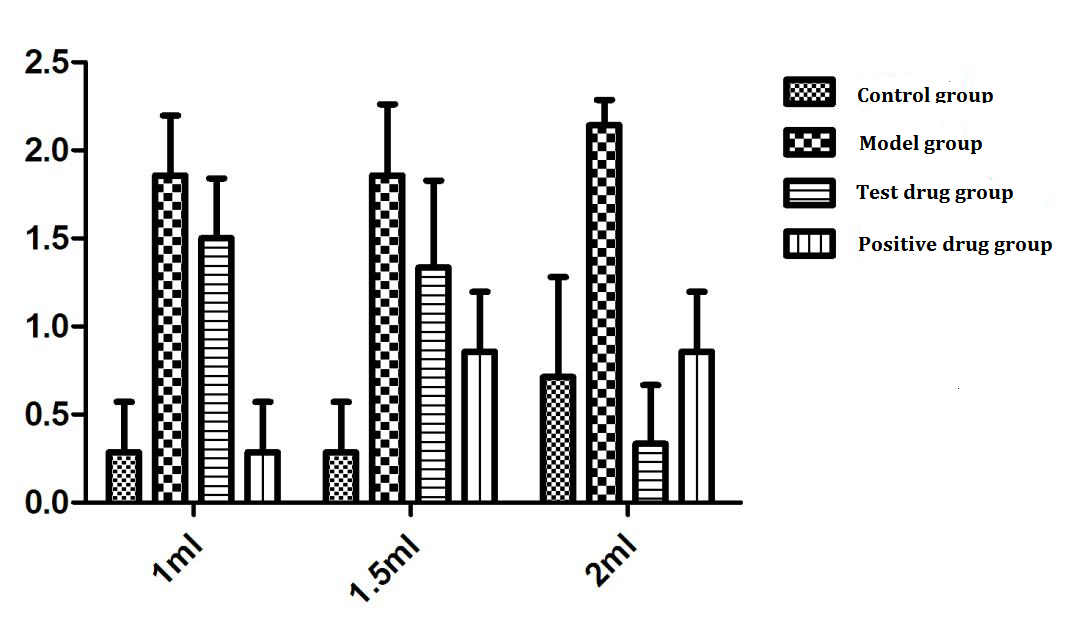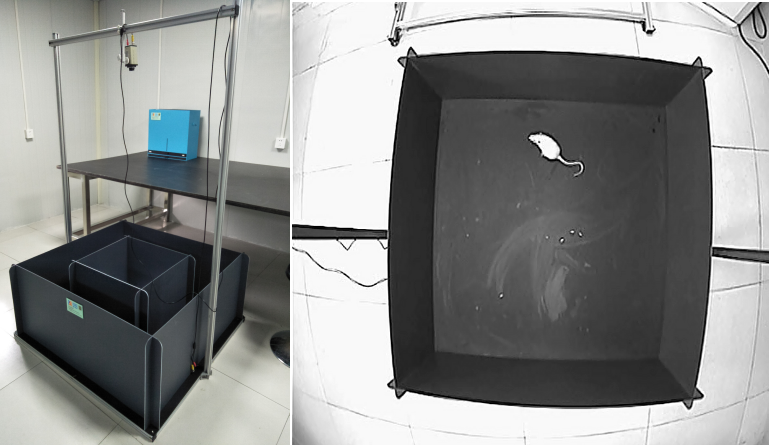- SPF
Rat Model for Irritable Bowel Syndrome (IBS) 

- UOM
- FOB US$ 220.00
- Quantity
Overview
Properties
- Product No.DSI533Ra02
- Organism SpeciesRattus norvegicus (Rat) Same name, Different species.
- ApplicationsDisease Model
Research use only - Downloadn/a
- Category
- Prototype SpeciesHuman
- Sourcediarrhea-predominate irritable bowel syndrome by drugs
- Model Animal StrainsSD Rats(SPF), healthy, male and female, body weight 180g~200g.
- Modeling GroupingRandomly divided into six group: Control group, Model group, Positive drug group (pinaverium bromide) and Test drug group.
- Modeling Period6 ~8weeks
Sign into your account
Share a new citation as an author
Upload your experimental result
Review

Contact us
Please fill in the blank.
Modeling Method
Rats in model group, drug group and pinaverium bromide group were given with 1 g/ml senna decoction by gavage (10 ml/kg), 1 times/day.
The test drug group and pinaverium bromide was crushed and dissolved in distilled water to a concentration of 1.5 mg/ml suspension, 10 ml/kg by gavage, 2 times/day. The normal group and the model group were gavage with the same dose of normal saline for 3 weeks.
Model evaluation
1. Abdominal wall retreat reflex (AWR score)
After the model was built, the rats were forbidden to feed water at 24 h before the experiment. After mild anesthesia in rats, the balloon catheter was inserted slowly from the anus, and the 8F catheter (catheter diameter 2.7 mm and maximum balloon volume 3 ml) were inserted from the anus.
The distal end of the balloon is about 1 cm from the anus, and is fixed at the end of the tail of the rat at the outside of the anus at 1cm. Each rat was dilated 3 times with the volume of 1, 1.5, 2 ml, and each expansion lasted 3-5 min, and the interval was 30 s (against intestinal ischemia). Each capacity is repeated 3 times, taking the average.
AWR scoring criteria:
0 points, the rats' mood was basically stable when the colorectal distention was given.
1 points, when given stimulation become unstable, occasionally twisting the head;
2 points, a slight muscle contraction of the abdomen and back abdomen but not lift off the ground;
3, abdomen and back muscles and abdominal contraction lifted off the ground;
4 points, the abdominal muscles contracted strongly, the abdomen was arcuate, and the abdomen and perineum were lifted from the ground.
2. The open field experiment
The box is a high field 30~40cm with a bottom length of 100 cm, and the color of the circumferential wall is black. The open field bottom is divided into 25 4 x 4 cm small squares. The camera is on the top, and the vision covers the whole field. The rats were placed in the middle of the Bay, at the same time and time the camera (5 mins). The computer tracer analysis system is used to analyze the activity state of rats in a certain period of time.
Observation index: through the number of squares (animal limbs from one into another through a lattice), the number of vertical (double forelimbs simultaneously from the animal, or double forelegs on the wall as a number of central upright), time, through the central lattice.
Pathological results
The rat spinal ganglion, the spinal cord and the lumbosacral segment were taken, and the expression and localization of NMDAR1 and NMDAR2B in each group were detected by IHC.
Cytokines level
Statistical analysis
SPSS software is used for statistical analysis, measurement data to mean ± standard deviation (x ±s), using t test and single factor analysis of variance for group comparison , P<0.05 indicates there was a significant difference, P<0.01 indicates there are very significant differences.
Giveaways
Increment services
-
 Tissue/Sections Customized Service
Tissue/Sections Customized Service
-
 Serums Customized Service
Serums Customized Service
-
 Immunohistochemistry (IHC) Experiment Service
Immunohistochemistry (IHC) Experiment Service
-
 Small Animal In Vivo Imaging Experiment Service
Small Animal In Vivo Imaging Experiment Service
-
 Small Animal Micro CT Imaging Experiment Service
Small Animal Micro CT Imaging Experiment Service
-
 Small Animal MRI Imaging Experiment Service
Small Animal MRI Imaging Experiment Service
-
 Small Animal Ultrasound Imaging Experiment Service
Small Animal Ultrasound Imaging Experiment Service
-
 Transmission Electron Microscopy (TEM) Experiment Service
Transmission Electron Microscopy (TEM) Experiment Service
-
 Scanning Electron Microscope (SEM) Experiment Service
Scanning Electron Microscope (SEM) Experiment Service
-
 Learning and Memory Behavioral Experiment Service
Learning and Memory Behavioral Experiment Service
-
 Anxiety and Depression Behavioral Experiment Service
Anxiety and Depression Behavioral Experiment Service
-
 Drug Addiction Behavioral Experiment Service
Drug Addiction Behavioral Experiment Service
-
 Pain Behavioral Experiment Service
Pain Behavioral Experiment Service
-
 Neuropsychiatric Disorder Behavioral Experiment Service
Neuropsychiatric Disorder Behavioral Experiment Service
-
 Fatigue Behavioral Experiment Service
Fatigue Behavioral Experiment Service
-
 Nitric Oxide Assay Kit (A012)
Nitric Oxide Assay Kit (A012)
-
 Nitric Oxide Assay Kit (A013-2)
Nitric Oxide Assay Kit (A013-2)
-
 Total Anti-Oxidative Capability Assay Kit(A015-2)
Total Anti-Oxidative Capability Assay Kit(A015-2)
-
 Total Anti-Oxidative Capability Assay Kit (A015-1)
Total Anti-Oxidative Capability Assay Kit (A015-1)
-
 Superoxide Dismutase Assay Kit
Superoxide Dismutase Assay Kit
-
 Fructose Assay Kit (A085)
Fructose Assay Kit (A085)
-
 Citric Acid Assay Kit (A128 )
Citric Acid Assay Kit (A128 )
-
 Catalase Assay Kit
Catalase Assay Kit
-
 Malondialdehyde Assay Kit
Malondialdehyde Assay Kit
-
 Glutathione S-Transferase Assay Kit
Glutathione S-Transferase Assay Kit
-
 Microscale Reduced Glutathione assay kit
Microscale Reduced Glutathione assay kit
-
 Glutathione Reductase Activity Coefficient Assay Kit
Glutathione Reductase Activity Coefficient Assay Kit
-
 Angiotensin Converting Enzyme Kit
Angiotensin Converting Enzyme Kit
-
 Glutathione Peroxidase (GSH-PX) Assay Kit
Glutathione Peroxidase (GSH-PX) Assay Kit
-
 Cloud-Clone Multiplex assay kits
Cloud-Clone Multiplex assay kits








